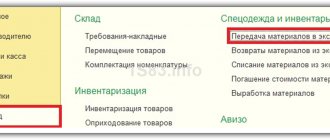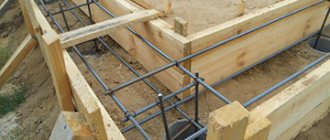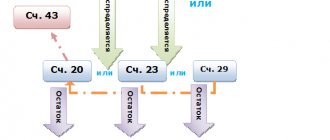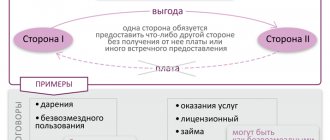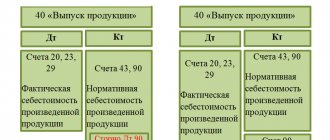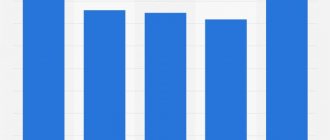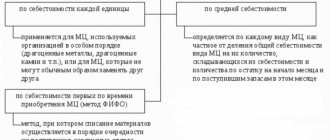One of the key factors to increase the competitive advantages of the production process is timely and correct determination of the cost of manufactured products. Typically, production accounting is associated with fairly serious software, and it is believed that purchasing an ERP is required to perform it. But this is far from a mandatory condition. Production accounting blocks are available in software solutions created on the basis of the widely used 1C:Enterprise. With their help, you can calculate the profitability of production using promptly received information about the cost of goods produced. The data obtained allows you to make informed management decisions, plan the production process, calculate options for attracting investment funds, etc.
Stages of production in 1C 8
The production process of creating any product is divided into several conditional cycles:
- purchasing materials;
- their transfer to production;
- release of finished products;
- calculation of the cost of manufactured goods.
Let's take a closer look at how 1C takes into account production as a process and how its stages are reflected. We will use the most popular and widespread program as a tool. allowing you to automate production accounting - “1C: Enterprise Accounting 3.0”. An example would be the production of leather goods.
Creating a product range in 1C
In order to begin accounting for production, it is necessary to determine the range of products produced. To perform these actions in the 1C system, you will need to go to the “Directories” menu, then to the “Goods and Services” section, where you need to click on the “Nomenclature” indicator. Clicking the "Create" button will bring up a pop-up window that says "Nomenclature (creation)." Here you fill out the fields in which you enter data about the name of the product (short and full name), units of measurement and article number. In further calculations, these records will significantly simplify the product accounting procedure. In the example used, the product will be a bag made of black genuine leather.
After the nomenclatures are entered into the system for at least a single type of materials used, the system automatically includes the “Specification” tab.
A specification in the generally accepted sense is a document according to which production requirements are established. The specification of a manufactured product is a technology-approved list of materials and accessories required for sewing a unit of product. For this example with a bag, the specification includes the following materials:
- 40 cm genuine black leather;
- 20 m of black thread;
- 1 PC. 30 cm zipper;
- 1 PC. 15 cm zipper.
Receipt of goods and input of product specifications
As they say, the theater begins with a hanger, and the production process, whatever one may say, begins with the well-known document “Receipts of goods and services.” We'll just have the materials arrive.
We will not describe the preparation of the receipt document (materials are received on the 10th invoice).
We will produce the LED lamp “SIUS-3000-CXA”. Let’s create a new nomenclature unit with the same name in the 1C “Nomenclature” directory.
Now you need to indicate what the lamp will be made from, or rather, create a product specification (for more information about specifications, see the article Components of items in 1C). Expand the “Production” section in the product card and create a new specification:
We have decided what the lamp consists of, the necessary components have been registered and are in the warehouse. You can start the production process in 1C 8.3. Let's take a brief look at how this happens and what documents will have to be created.
To write off materials for your own production in the 1C program, two documents are usually used:
- The invoice requirement is used to reflect general business and production costs. In this case, expenses are allocated to products using the regulatory procedure “Calculation of cost” at “Closing the month”.
- The production report for a shift allows you to distribute direct costs (materials and services) to specific items of finished products, which are recorded on the “Materials” and “Services” tabs.
Under no circumstances should you complete two of these documents at once.
Purchase and posting of materials in 1C
To start accounting for production in 1C, you will need to determine cost estimates. The purchasing department concludes contracts for the purchase of materials for production. In 1C you can register all concluded contracts, enter data on invoices and invoices linked to specific contracts with suppliers. This is done in the “Purchases” section, where you select the “Invoices received” or “Invoice from supplier” tab.
After the invoice is paid, in 1C the materials are accepted into the warehouse and do not require re-entering the data with the list of purchased materials into the system. Account 10 “Materials” is automatically posted as a debit from account 60 “Suppliers and contractors” of the loan.
Transfer of material for production in 1C
After the goods necessary for production have appeared in the warehouse, in 1C it becomes possible to generate electronic documents in the “Requirement-invoice” format. The need to create this document is explained by the fact that it allows you to write off materials in the warehouse for production. To create, click the “Create” button in the “Production” menu, after which information on the material and its quantity and write-off account are entered.
Posting the document “Requirement-invoice” in 1C generates a posting from the credit of account 10 (writing off materials) to the debit of account 20 (production). The invoice requirement is generated either for one type of materials, or for all, necessary for production.
It should be noted that accounting in 1C makes it possible to write off only that material for production. which was previously recorded in the warehouse. This acts as an additional means of monitoring the state of warehouse accounting of materials and its actual write-off into production.
In addition, the correct choice of the range of necessary materials allows you to avoid writing off materials that are not related to the type of product being manufactured. In cases where an enterprise produces several different types of products, entering materials into the system and control carried out in the nomenclature mode eliminates the occurrence of inaccuracies in accounting.
Sewing a bag requires writing off the following list of materials for production:
- thread;
- genuine leather;
- accessories;
- material needed to make the lining.
From the listed expenses, variable costs for making the bag are formed.
To reflect fixed production costs, you will need to uncheck the “Cost Accounts” item in the “Request Invoice” document that is being generated. This operation allows you to create a bookmark for creating a bookmark for cost accounts. Since in the example under consideration, the enterprise produces only handbags and is not engaged in other commercial activities, expenses associated with remuneration of the management staff are written off as production.
Invoice requirement: transfer of materials to production
We will transfer the materials to production on the 20th account. At the same time, they will be written off from the warehouse.
The “Requirement-invoice” document is used to transfer materials from the warehouse to production. Go to the “Production” menu and click on the “Requirements-invoices” link.
The “Demand invoice” document is used when it is necessary to write off materials that cannot be linked to a specific product. An example of such materials is office supplies, fuels and lubricants, consumables and other general production or general business expenses.
Let's create a new document. Fill in the required header details. In the tabular part of the document, we select the materials needed for production according to the specification. The quantity may be greater, the main thing is that it is enough to produce the planned volume of products:
Let's run the document and see what transactions it generated in 1C:
In fact, this document forms (not counting indirect costs) the cost of production, that is, from the 10th account it transfers costs to 20.01.
To reflect other indirect costs in the header of the document “Request-invoice”, you need to uncheck the “Cost accounts on the “Materials” tab” checkbox. Then another tab “Cost Account” will appear. By specifying it, you can write off expenses that are not directly related to production, but participate in the formation of cost.
We clearly demonstrated how to work with the Request Invoice document in this video:
Accounting for the release of finished products in 1C
In accordance with the results of the shift, a corresponding document is created in the “Production” menu. It should reflect the results expressed in the number of units of products (bags) sewn in one shift.
To enter data, you will need to click the “Create” button, after which a specific product is selected in the “Nomenclature” directory - black leather bags, the number of units produced per shift and the planned estimated cost of the products are established (actual cost results are calculated at the end of the month after all regulatory operations have been completed).
You should pay attention to that. that a production report for each shift can also be generated based on the data entered in the “Requirements-invoice”.
Important! In the specified document, you will need to select “Finished products” - account 43, and link the specification related to specific bags, because other products, despite the same costs for their production, may be of a different color.
Clicking the “Fill” button in the “Materials” tab allows 1C to automatically transfer all necessary materials from the specification to the production of one unit of product. At the same time, quantitative characteristics can be edited. At the same time, the materials necessary for production are written off: threads, leather, fittings, lining material.
When carrying out the operation, a posting occurs: Debit “Main production” 20 account / Credit “Materials” 10 account.
This operation is simultaneously accompanied by a posting for the release of finished products from production: Debit “Finished Products” of account 43/Credit “Main Production” of account 20.
Transfer of materials to production in the 1C system
The materials we need have appeared in the warehouse. Now 1C allows the generation of an electronic document “Demand-invoice”. Why do we need it? This document allows you to write off materials from the warehouse for production. We can find it in the “Production” menu. Next, using the “Create” button, enter information on the necessary materials, their quantity, and the write-off account.
Fig.4 Information about materials
Posting this document in 1C will formulate the posting of the write-off of materials (account credit 10) to production (account debit 20). An invoice requirement can be generated for one type of material or for all materials necessary for production. Please note that accounting in 1C allows you to write off for production only those materials that were previously credited to the warehouse, which creates additional control, both in terms of accounting for materials in the warehouse and the actual write-off for production. In turn, the correct choice of nomenclature will allow you to avoid writing off materials that are not directly related to this type of product. That is, if an organization, for example, produces two or more types of products, control using the “nomenclature” mode will avoid inaccuracies in accounting.
To sew a handbag, you need to write off the following materials for production:
- Genuine Leather;
- Threads;
- Accessories;
- Lining material.
These expenses form the variable costs of our production.
To reflect fixed production costs, it is necessary to uncheck the “Cost accounts” checkbox on the “Materials” tab in the “Request-invoice” document. This operation will allow you to create a new tab “Cost Account”. Since in our example the organization is engaged only in sewing handbags, all other costs associated with maintaining management personnel can be immediately written off to production.
Calculation of the cost of finished products in 1C
Documents on the production report for each shift and the “Requirement-invoice” form similar entries for the write-off of materials for production (Dt-20 inc. Kt-10 inc.). To avoid double write-offs of the same materials, it is necessary to conduct a release for exchange report - this document, in addition to writing off materials for production, also generates postings for their release from production.
Calculation of the actual cost for finished products in the 1C system is carried out upon closing the month by conducting a routine operation. To perform this action, you must click the “Create” button in the “Routine Operations” section. After this, a list of available operations will be generated: “tax calculation”, “depreciation of fixed assets”, etc. You should select the item that suggests closing accounts 20, 23, 25, 26. The debit of the “Main production” account 20 reflects the costs allocated to production, and for a loan - finished products that came out of production. The difference obtained between the credit of account 20 and the debit is the actual cost of the final product manufactured.
Sales of materials in 1C: Accounting.
Selling materials to a buyer is not much different from selling goods. Go to Sales - Sales (acts, invoices) .
We create a new document, fill in all the items in it, and when selecting items, the accounting accounts will be automatically filled in, but the Other income and expenses item is empty, so you need to fill it out to attribute income from the sale of materials.
If you don’t have such an item, you can create it yourself.
Now you can see what transactions this document generates. As can be seen from the postings, the program independently generates postings to account 91.02 “Other income and expenses”, since trading in materials is not the main activity.
We looked at the basic operations with materials in the 1C: Accounting program.
Comments ()
- Natalia 09 December 2021, 16:17 0
Good article. Written in accessible and understandable language. Thanks a lot!!!))))answer
- Vova 09 December 2021, 16:17 0
Thank you. Here, everything is clearly explained and shown.answer
- Vitaly December 09, 2021, 16:17 0
The best article, simple, accessible and understandable! Thank you!answer
- Alina March 19, 2021, 2:05 pm 0
Hello, how can I remove the “Materials” tab in the production report for a shift?answer
- Olga March 31, 2021, 10:52 am 0
Great!answer
- Feride 11 July 2021, 14:01 0
Good day. I wanted to clarify one point. We use materials to make our products in our production. such as: sandpaper, glue and others. I need to transfer them to production. I did this using the document Request-invoice. Now I need to write them off because they became unusable during production. Please tell me this moment. The arrival of goods was spent as a purchase of materials. Thank you in advance.answer
- Nt 01 November 2021, 20:54 0
Good times! Thank you very much. How is VAT written off? After transfer to the province and release, VAT remained at 19 (((answer
- Nt-voyt November 01, 2021, 20:56 0
Good afternoon, thank you very much for the explanation. I would like to clarify - after the materials were written off for production and the products were released, VAT remained on account 19. How to reflect its write-off and accounting in the purchase book?answer
Work in progress accounting
You can account for work in progress in 1C: Accounting by using the document “WIP Inventory”, which is designed to display the results obtained after an inventory check of production areas for the presence of work in progress. It is required to be created in the following cases:
if the production of products (or the implementation of work or the provision of services) occurred throughout the entire month, but was allowed to be transferred to the next month;
The work cycle lasts more than a month and as a result, at its end there are no finished products or completed works/performed services. Expenses for the past month are included in the work in progress and are automatically transferred to the next reporting period.
There is no need to create an accounting of work in progress when the provision of services, performance of work, production of products within a month has been completed, but there are no balances of work in progress (accounts 23 and 20 are closed monthly).
To generate the document, you will need to fill in the following details:
- cost accounts, which reflect the balance in the work in progress, auxiliary or main production can be selected: accounts 23 or 20.01;
- if the program settings are set in such a way that the possibility of maintaining cost accounting by divisions is noted, the balance in the refinery is reflected in the Cost Division,
- nomenclature group - displays the balance in the refinery in the types of services provided, work performed, products produced;
- balance amount – the total estimate of work in progress balances obtained from accounting data
- balance amount – the total estimate of work in progress balances obtained from tax accounting.
There may be cases in which the reflection of inventory facts and the total estimate will be present in accounting, but it will not be in tax accounting. Or the opposite situation: the presence of an assessment in tax accounting and its absence in accounting.
The formation of product costs may include data on the cost of work in progress for the past month. It is important to take into account that work in progress is considered to be those products that have not gone through all stages (stages) of production operations as of a specific date. When accounting for work in progress, “Semi-finished products of own production” can also be used - account 21.
Accounting for work in progress in 1C
For this type of accounting, 1C:Accounting provides a document “WIP Inventory”, designed to display the fact of the results of an inventory check of WIP at the production site, generated in the following cases:
- The release of products/works/services is carried out within a month, but it can be postponed to the next calendar month;
- The cycle is more than a month, there is no release within a month. Expenses should be taken into account as part of the work in progress and carried forward to the next month.
... and does not require formation when:
- The release of products/works/services is carried out within a month, at the end of the period there are no balances of work in progress (Accounts 20 and 23 are closed monthly).
When creating a document, you must fill in the following details:
- Cost account where you need to record the balance in the work in progress. You can select accounts 20.01 and 23 – Main and Auxiliary production, respectively;
- In the Division, if the “Keep cost records by division” checkbox is checked in the program settings, – Cost division, where you need to display the balance in the refinery;
- Nomenclature group – Types of finished products (works, services) for which the balance must be displayed in the refinery;
- Balance amount – total estimate of work in progress balances according to accounting data;
- The amount of the balance of invoices is the total estimate of the balances of work in progress according to tax accounting data.
When reflecting inventory facts, there may be cases when there is a total estimate in accounting, but not in tax accounting, and, conversely, when there is an estimate in tax accounting, it is not in accounting.
Fig.7 WIP inventory
When determining the cost of finished products, it may include the cost of the previous month's work in progress. It is important to remember that work in progress is products that have not passed all stages (phases) of production on a certain date. When accounting for work in progress, account 21 “Semi-finished products of own production” is also used.
Accounting for semi-finished products of own production in 1C
The use of the mentioned account 21 is necessary for organizations in which the production of semi-finished products is one of the production cycles. For all other enterprises, accounting for semi-finished products is carried out as part of WIP accounting. In correspondence on the debit “Main production” of account 20, it is necessary to reflect the amounts of actual costs incurred in the manufacture of semi-finished products. According to the loan, the cost of used semi-finished products is written off to the same production accounts.
As with the release of finished products, the production of semi-finished products is noted in the report produced per shift in the “Product Release” menu. To do this, fill in the following fields one by one:
- write-off account (“Main production” 20/1);
- the production unit that produced the semi-finished product;
- planned cost;
- “Semi-finished products of own production” accounting account 21.
Carrying out this document is necessary to account for the semi-finished products available in the warehouse.
Closing Cost Accounts
Accounts 20/21/25/26/29 are closed by performing the operation from the regulations - “Closing the month”. At the same time, there are no difficulties with direct costs (they are obvious - these are materials and wages of workers performing work related to the production activities of the enterprise), but with indirect overhead costs the situation is more complicated.
In order to correctly distribute the organization’s indirect costs, the accountant must reflect the cost distribution method in the “Accounting Policies” column. This distribution is usually proportional to either wages paid or the output of finished products.
If the cost accounting method is incomplete or incorrectly reflected, the 1C system will issue information that will indicate the specific error made in the accounting policy, and will issue proposals for actions that can eliminate the inaccuracy.
Indirect costs are written off to account 20 or immediately attributed to sales - account 90. Such expenses are closed before account 20 is closed.
If the accounting setup is correct, the amounts on 25/26/29 accounts are distributed between groups of manufactured goods in accordance with the selected method. In the example given, when the product is the only item produced by the company, indirect costs are written off to production. The 20 account closes with the 40 score.
As a conclusion, it should be noted the accounting capabilities provided by 1C: Accounting. They cover all existing production stages and provide the ability to control, track the origin of costs and analyze them. At the same time, these possibilities are universal and therefore somewhat superficial. If you need to fully automate accounting, for manufacturing enterprises we offer 1C: Complex Automation, 1C: UNF, or automation based on 1C: ERP for the largest industries.
